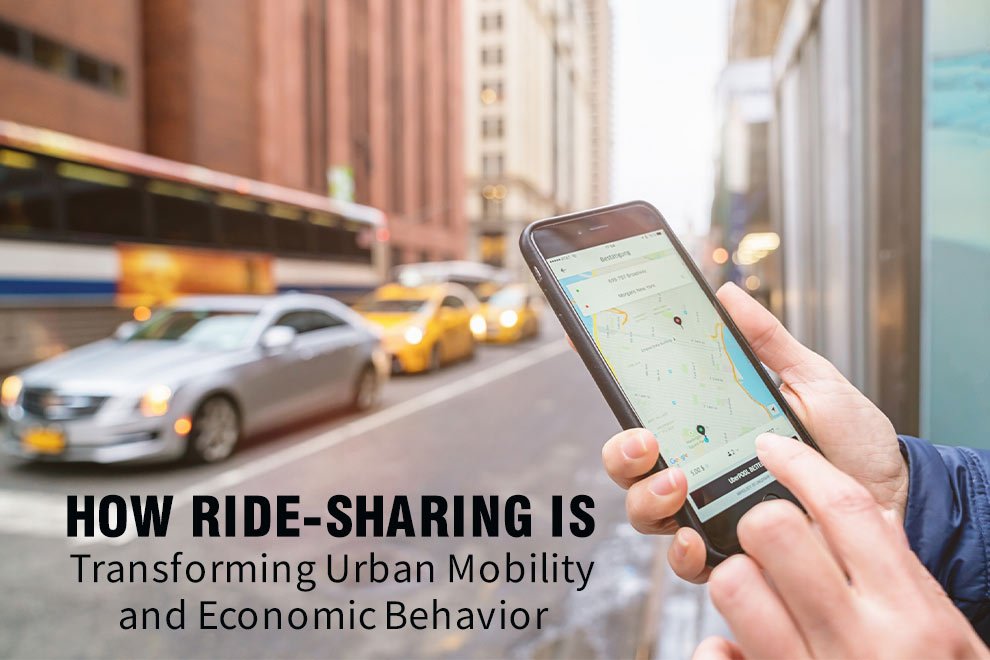City travel is changing in a big way, mostly because of ride-sharing apps like Uber and Lyft. These apps let people get a ride with just a few taps on their phone. It’s quick, easy, and often cheaper than other ways of getting around.
Now, many people use these apps every day. They have become an important part of how people move around in cities. Ride-sharing doesn’t just make travel easier. It also changes how people spend money and how cities work.
In this article, we’ll explore why ride-sharing apps are becoming so popular and how they are changing city transportation and the way people make choices.
The Rise of Ride-Sharing Services
Ride-sharing became popular when apps started helping drivers and passengers find each other easily. In big cities, people often have problems like traffic and not enough parking spaces. Because of this, they look for smarter ways to get around.
Ride-sharing apps use technology to let people share rides right away. This means fewer cars on the road at the same time.
With fewer cars, there’s less traffic and less pollution. This helps make cities easier to travel through and cleaner to live in.
Impact on Urban Transportation Patterns
As cities get bigger, getting around becomes harder. Ride-sharing apps are not just a quick solution, They’re changing the way people travel.
These apps are easy to use, save money, and give people more choices. They are especially helpful for those who don’t have a car or live far from buses or trains.
Because of ride-sharing, many people are starting to use their own cars less. Instead, they are choosing to share rides. This helps everyone get where they need to go more easily.
Changing Commuting Habits
Many studies show that ride-sharing has changed how people travel. Instead of driving their own cars or riding the bus, lots of people now choose to use ride-sharing apps.
More and more people in cities are using these services. In fact, many young people, especially from Gen Z, think ride-sharing is a good replacement for owning a car. This means fewer people are buying their own cars and are sharing rides instead.
Seasonal Variations
Ride-sharing gets busier during certain times of the year. For example, more people use these services on holidays, weekends, or during big events like concerts and sports games.
Because of this, ride-sharing companies need to quickly add more drivers when things get busy. This helps make sure there are enough rides for everyone when a lot of people need them.
Economic Behavior Shaped by Ride-Sharing
Ride-sharing isn’t just influencing how we get around. It’s also reshaping economic behaviors at various levels. When considering cost-effectiveness, many younger adults, particularly Gen Z, often choose ride-sharing over car ownership.
Data indicates that this generation is more conscious of their expenses. It gravitates towards alternatives that promise affordability.
As fuel prices continue to rise, understanding Gen Z gas usage becomes even more critical in illustrating how economic decisions are increasingly linked to transportation modes. This shift can be attributed to individual economic goals that prioritize experiences over ownership.
Environmental Considerations
Ride-sharing can also help the environment. Many cities have problems with pollution and climate change. When people share rides instead of driving their own cars, it can help lower the amount of harmful gases like CO2 in the air.
Ride-sharing encourages carpooling, which means fewer cars on the road. This can make the air cleaner and help protect the planet.
Gentrification and Mobility Trends
Ride-sharing has also been connected to changes in neighborhoods. As it becomes easier for people to get around, some areas start to change. More people may move in, and this can make housing prices go up.
Sometimes, the shops and businesses in the neighborhood also change. These changes can make it harder for some families to stay in the area. It’s important for city leaders to think about these changes so that everyone can benefit from ride-sharing.
Barriers to Ride-Sharing Adoption
Even though ride-sharing has many good things about it, some people still have trouble using it. For example, in the countryside, not everyone has fast or reliable internet, which makes it hard to use ride-sharing apps.
Some people also feel worried about safety, especially women and those who may need extra help. Ride-sharing companies need to work on making everyone feel safe. Also, while ride-sharing is easy to use, it can make regular taxi drivers worry about losing their jobs.
Safety and Trust Issues
Safety is one of the biggest concerns when it comes to ride-sharing. Even though companies have added things like driver ratings, GPS tracking, and emergency buttons, some people still feel nervous about riding with someone they don’t know.
To help more people feel comfortable using ride-sharing, it’s important to make these services as safe as possible. Companies should also teach people how to use the safety tools and be honest about how everything works.
Legal and Regulatory Challenges
Legal regulations often present another layer of complexity. From licensing requirements to insurance policies, these hurdles can vary significantly across regions. The lack of uniformity in regulations can hinder the growth of ride-sharing services.
Local governments must work collaboratively with ride-sharing companies. This balances innovation with public safety.
Future of Urban Mobility with Ride-Sharing
The future of urban mobility is brightened by the innovations rooted in ride-sharing. As cities evolve, the integration of ride-sharing into public transportation could lead to a more cohesive commuting experience. Partnerships between ride-sharing companies and municipal transport systems could enhance accessibility for underserved communities.
For instance, combining ride-sharing with public options like buses and trains can ease congestion by providing first-mile and last-mile solutions.
The Shift Toward Sustainability
As cities strive for greener solutions, ride-sharing is poised to be part of the sustainability movement. Innovations surrounding electric vehicles and eco-friendly options are already gaining traction within ride-sharing platforms.
The ongoing transition to electric fleets could significantly reduce emissions. It aligns ride-sharing with environmental goals.
Embracing the Ride-Sharing Revolution
Ride-sharing has changed the way people get around in cities. It has made it easier for many to travel and also made people think more about helping the environment and trying new ideas with money and business. As cities get busier, the real question isn’t if ride-sharing will stay important-but how it will keep changing in the future.
For more sustainability tips, check out our blog posts.
Also Read: Hong Kong Open Doors Wider for Global Scholars as US Policy Uncertainty Sparks Change










